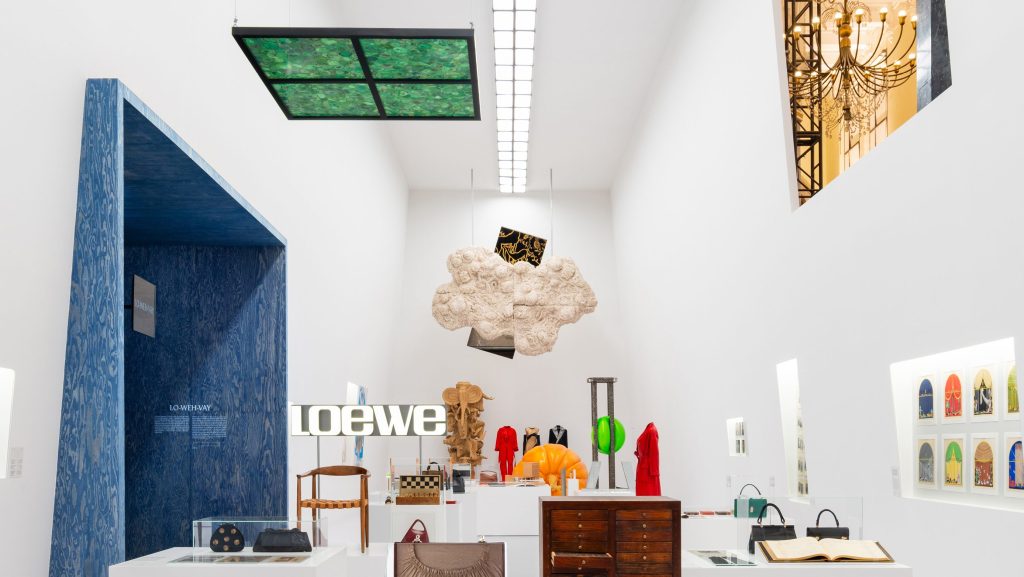I understand why fashion has its critics. Millions of people are already dealing with the devastating effects of climate change, in societies fraught with inequality. For too long, fashion companies have downplayed their role.
The industry produces around 10 percent of global carbon emissions and, based on trends, these could surge. Fashion is responsible for staggering water consumption, soil destruction, ocean pollution and landfill, and human rights violations affect vulnerable workers throughout the value chain. There are enough garments in the world to clothe the next six generations. It’s easy to despair.
Yet despair is another form of delay, and time is already in short supply. It’s precisely because fashion has an outsize impact on people and planet that we must work together to transform it.
For every industry, this starts with individual companies, and ambition is key. At Unilever, we made our overarching goal to decouple growth from environmental impact. We wanted to create more value but without harm, whilst improving the lives we touched. We sought to serve all stakeholders — not only shareholders. We took responsibility for all our negative impacts, and not just the obvious ones. We set uncomfortable goals in line with science. Although we didn’t achieve everything, over my 10 years there the company made a step change, consistently ranking first in the world for sustainability while delivering a 290 percent increase on investor returns.
Many fashion companies are undoubtedly raising their game. Both Kering and H&M Group, for example, are committed to reducing absolute emissions, rather than a relative figure, where gains are quickly wiped out by growth. Both also include so-called “Scope 3,” meaning emissions the companies are indirectly responsible for in their value chains. Inditex aims to get most of its raw materials from sustainable sources within the next two years. Aigle wants to enable people to experience nature “without leaving any impact except their footprints.” Chloé is the first big luxury brand to become a certified B Corp. India’s Shahi Exports is pushing boundaries. Fashion is moving.
Still, the industry is not moving fast enough. Too many companies are doing too little, and the better examples still don’t add up. We need to get the industry to tipping points, and fast. Collective action is the only way.
Chief executive officers, like all human beings, find their courage in the collective. Together, businesses can address problems no company can tackle alone, with speed and scale. Fashion businesses can compete over many things, but not the future of humanity. Whether you’re Gucci, LVMH or Primark, you all need low-impact materials, like leather which doesn’t cost the Amazon rainforest, and cotton which doesn’t worsen water scarcity, pesticide pollution and global warming. You all need effective recycling systems, instead of relying on landfill. You all need the right regulatory frameworks, whether it’s common rules to stop the tide of plastic waste or to raise labor standards in supply chains. For all this and much more, fashion companies need each other.
This is why, with Kering’s François-Henri Pinault and myself as founders, we set up The Fashion Pact: a coalition of more than 60 CEOs and 160 brands, representing a third of the global industry, and including ready-to-wear, sports, lifestyle and luxury sectors. The idea is that by taking joint action on climate, ocean pollution and biodiversity, a critical mass of leaders can drive industry-wide reform.
All members are committed to creating a “net-zero and nature positive” fashion industry. To turn vision into reality, these companies are collaborating in unprecedented ways, and it’s working. It’s not easy. We’re not talking about a group of businesses signing up to high-level statements: We’re talking about them rolling up their sleeves to collaborate with their peers, and this requires next-level commitment. It’s painstaking, unglamorous cooperation, and it takes companies deep down into the operational weeds. But it’s the only way to bring about real and scalable change.
For example, every Fashion Pact member knows they need to get off fossil fuels. It won’t happen quickly enough if everybody chips away at the problem on their own. So, in a first for the industry, a dozen members are jointly investing in a solar facility in Spain to add much needed clean energy onto the grid. They’re setting a precedent for fashion, and more joint energy buying will follow.
Another example: Members are designing a system of carbon credits to help farmers shift to regenerative practices and produce lower-impact cotton. It’s being piloted with hundreds of farmers in India and the U.S. If the market mechanism works, 25 brands are lined up to adopt it.

Seventeen have engaged in a joint research and development project to develop a paper alternative to plastic polybags used to transport garments. Led by Chanel and Kering, companies who produce mainly in Europe are joining forces to help their suppliers decarbonize. High-volume players in Asia are doing similar. And we’ve developed practical tools all fashion businesses need in order to rethink their relationship to nature, and to support biodiversity rather than destroy it.
The private sector can’t transition our economies alone: We need the right laws and standards to get us there, too, and this kind of cooperation can send a powerful signal to governments. Many significant regulatory shifts are under way, including talks for a Global Plastics Treaty and new international targets to reverse nature loss, and politicians are trying to gauge businesses’ mood. When fashion’s CEOs speak with one voice and work across their sector’s divides for the common good, it encourages policymakers to do the same.
Success, of course, will depend on what can be delivered. Society is impatient for fashion to move faster, and rightly so: The industry’s transformation is a red line for humanity. At last we have hope, progress and a model that works. Fashion now has the most advanced CEO-led coalition of any part of the global private sector. Purely competitive leadership is giving way to a more cooperative style, and it’s creating space for bigger and faster change. We need a fashion industry that supports thriving societies and a flourishing world. It’s time to cooperate and to accelerate.
Editor’s note: Paul Polman is a former CEO of Unilever and co-founder and co-chair of The Fashion Pact. He is a co-author of “Net Positive: How Courageous Companies Thrive by Giving More Than They Take.”



